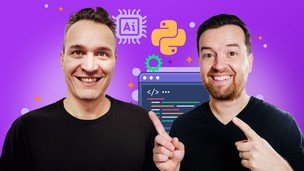A generative ai course is a fast-growing field of machine learning that can create new content, translate languages, write different types of creative content, and answer your questions in an informative way. It has great potential to revolutionize the way we create and use products.
A generative ai course refers to any artificial intelligence model that generates new data, information, or documents.
For example, many companies record their meetings, both live and virtual. Here are a few ways generative AI could transform these recordings:
create a list of agreements reached at the meeting.
generate a short summary of the meeting for people who were unable to attend, highlighting important information.
provide answers to questions arising from this meeting.
And this is only a small part of all processes.
Generative AI Model Examples
There are a number of products using generative ai courses already available on the market – we'll give you a few examples below. The underlying principle of the generative ai courses at AI Eeducation varies depending on the specific model or algorithm used, but some common approaches include:
Variational Autoencoders (VAEs) are a type of generative model that learns to encode input data into a latent space and then decode it back into the original data. The "variational" part of the name refers to the probabilistic nature of the latent space, allowing the model to generate a variety of outputs.
Generative Adversarial Networks (GaN): GaNs consist of two neural networks, a generator and a discriminator, that are trained simultaneously through adversarial learning. The generator creates new data, and the discriminator evaluates how well the generated data matches the real data. The competition between the two networks causes the generator to improve over time in producing realistic outputs.
Recurrent Neural Networks (RNNS) and Long Short-Term Memory (LSTM): These types of neural networks are often used to generate sequences such as text or music. RNNS and LSTM have memory that allows them to process a series of events over time, making them suitable for tasks where the order of elements is important.
Transformer models: Transformer models, especially those with attention mechanisms, are very successful in various generative tasks. They can remember long-term dependencies and relationships in data, making them effective for tasks such as language translation and text generation.
Autoencoders: Autoencoders consist of an encoder and a decoder, and they are trained to reconstruct the input data. Although they are primarily used for learning to represent and compress data, variations such as denoising autoencoders (e.g. in images) can be used for generative tasks.
An ai generative course involves feeding a model a large data set and optimizing its parameters to minimize the difference between the generated output and the real information. A model's ability to produce realistic and rich content depends on the complexity of its architecture, the quality and quantity of training data, and the optimization techniques used during training!










